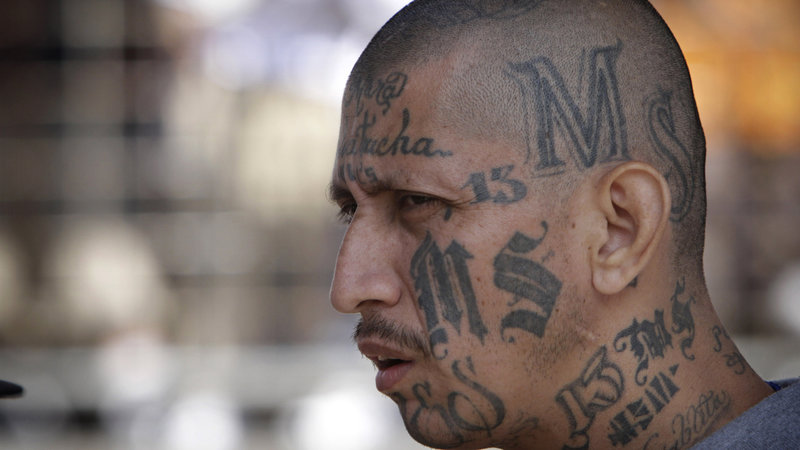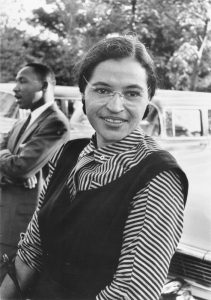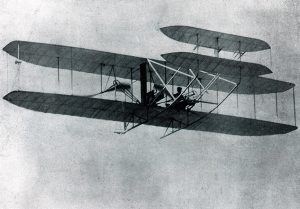Los Angeles is well-known for its major attractions such as Disneyland, Sea World, Universal Studios, and its many other attractions. Los Angeles is one of the most popular cities in the world. Of course, when people think of the city, they think of a very lavish lifestyle full of celebrities and famous Hollywood movies, but little do people know that there exists a whole different world in the southern part of the city. South-Central Los Angeles is known for its crime and gangs. The Bloods, which was a very big gang in Los Angeles, had already been formed and they were committing crimes throughout their neighborhoods in southern Los Angeles, much like their rival gang, the Crips. There was another gang known as the Barrio 18 (18th Street Gang), which was the largest gang not only in Los Angeles, but also in the country in the 1970s and 1980s. Though Los Angeles was the second largest Mexican population city in the world, it was also made up of numerous immigrant groups from Latin America beyond Mexico, and because of that, it was also the birthplace of the most dangerous and largest street gang in the world.
During the 1980s, the Central-American country of El Salvador was experiencing a very serious war between the government and its people. The army, loyal to the government, tried to recruit many young men to join with them, but many refused. With the war becoming more intense by the day, many people who were revolting against the government were being attacked. Since the government at the time was under a dictatorship, many of the young men were forced to join the government army. The recruiters would show up randomly at the schools. It did not matter if they were from high school, middle school, or elementary school, the government wanted young soldiers on their side. The recruiters took the young boys without giving warning to their families, and immediately trained them for war. Sometimes, when the army knew that some of these boys were against the government, they would simply kill them on the spot. Therefore, in fear of being drafted in this way, hundreds of thousands of Salvadorans fled to the United States.1 Most of the families who arrived in the United States had no idea where to go, because they did not have family members in the United States at that time. The immigrants spread throughout the southern United States, but the majority of the immigrants settled in various neighborhoods of Los Angeles. Within the city of Los Angeles, there were many longstanding gangs, such as Barrio 18, which mostly consisted of Mexican Americans, and there were also Asian gangs and African-American gangs. There was one particular neighborhood known as Pico Union, and it would become the birth place of one of the most notorious gangs of all time, based on the immigration of Salvadoran youths fleeing the violence of their homeland: MS-13.

The Pico Union neighborhood was originally home to a gang called the Barrio 18, or simply Street Gang 18. Before MS-13 came along, Barrio 18 was known as the most dangerous gang in America. At the time, Barrio 18 had a large number of members all over the United Sates, and some members resided in parts of Mexico or in Central America. Barrio 18 had become the most powerful gang in Los Angeles because of its violent acts and illegal business. Unlike MS-13, Barrio 18 was very well organized.2 Like any other gang, they were known for violence, illegal trading of narcotics, and prostitution, but they were constantly growing, especially since there were so many different groups of Latinos living in Los Angeles. But, all of that changed when the Salvadorans came into the picture.
Mexicans often harbor racist attitudes towards Salvadorans, and it was no surprise when tensions started rising between the two groups in the Pico Union district. There were many times when the two groups would start fights and would get in trouble with the authorities, which result in deportations, since many of the members were undocumented. Though most fights were physical, some of them resulted in many people getting seriously injured and sometimes killed. It was very common for many gangs to bring weapons with them for a fight, but since the Salvadorans were still ignorant to the ways of a gang, they were always unprotected.3
As time went by and the two gangs started to get into more conflicts, the need to fight back grew stronger among the Salvadorans. It is believed that the way MS-13 started came from a soccer match on the playground of Seoul International Park in the Pico-Union neighborhood of Los Angeles.4 Soccer is a very popular sport among Hispanics; therefore, it was not surprising to see the two groups play against each other. The Salvadorans and Mexicans were playing against each other when all of a sudden, a fight broke out that resulted in the Salvadorans being outnumbered once again. After that night, a group of young Salvadorans decided to get together and form what is now known as MS-13. The group swore to always protect their “barrio” or “hood.” From then on, MS-13 would expand to have around 700,000 members in many parts of the world.5

The gang started evolving and was soon starting to catch on to the gang lifestyle. Instead of guns, gang members would often carry a machete with them wherever they went. The machete was not only for protection, but it was also a way for the members to kill someone. The machete was also a common weapon for many Salvadorans to carry around with them back in El Salvador. One member of MS-13 would recall, “guarding the family’s crops at the age of 4, armed with a machete, alone at night.”6 Many times, their victims would suffer several cuts around their body or, in severe cases, some of their body parts would be completely cut off. As one officer recalled, he found a body, “on the banks of the Shenandoah River, repeatedly stabbed and her head nearly severed.”7
MS-13 consisted of many undocumented Salvadoran immigrants, but when the members started to get deported, they would go back to their country and spread the awareness of the newfound gang. Another distinct characteristic that the gang has is that the members of the gang usually have tattoos that use “the emblem MS-13” across their forehead, torso, or their back.8 Another common tattoo would be the devil’s hand with the MS-13 emblem. It was very easy to spot who the members of the gang were, let alone their mass number of members. The members of MS-13 would wear white shirts, maybe a flannel over it, large shorts that would often sag, and Cortez’s along with white socks. The gang adapted into a “cholo” like attire all while expanding their connections and creating a massive empire all throughout the 1980s. MS-13 grew more and they started having outposts all over El Salvador, Honduras, Nicaragua, and sometimes they would even recruit Mexicans. But, as the power and population increased, so did the tensions between them and Barrio 18.

As mentioned before, the Barrio 18 was mostly Mexican American, and Mexicans at that time were racist towards the Salvadorans. But, when MS-13 started growing and getting more dangerous, Barrio 18 could not help but notice what an empire the MS-13 had built. With both MS-13 controlling Pico-Union’s flourishing drug trafficking market, violence rose to a new level.9 A big reason why MS-13 became so famous was because of their distinct rivalry with Barrio 18. Since both groups had many members spread throughout the United States and many countries throughout Central America, they made many places very dangerous. For example, the city of San Pedro Sula in Honduras became one of the most dangerous countries in the world due to the gang violence between MS-13 and Barrio 18. Both gangs, “fight each other for control of territory so that they can expand their extortion rackets, trade in drugs and engage in other forms of organized crime. But gang members also murder their rivals simply to raise their status within their own gang, which helps perpetuate the conflict.”10
The way MS-13 operates is quite unique and is another aspect of what makes them unique. As one former member would say, “First is God, then your mother, then your gang. You live for God, you live for your mother, you die for your gang.”11 The gang seemed to be very family oriented, so they would recruit new members just as long as the new recruits would promise to stay loyal to them no matter what. If someone were to be discovered going behind the gang’s back or having relations with other gangs, then they would be killed without hesitation. For example, one member had turned to the government. Therefore, three MS-13 members—close friends of Paz— were “tapped” by the gang’s leadership to carry out her murder.12 MS-13 was very big on loyalty and being like a family, so there was no dictatorship that would keep the gang together, which also made them very difficult to take down by the authorities because they could not identify who the leader was. As many people would say, “It’s considered the fastest-growing, most violent and least understood of the nation’s street gangs.”13
Today, MS-13 has created a very large empire, spreading not only across the United States, but also throughout the world. The FBI has named MS-13 as the most dangerous gang and though there have been many efforts to stop their expansion, the gang seems to be almost impossible to stop.
- Kelly Padgett Lineberger, “Vanderbilt Journal of Transnational Law Note The United States – El Salvador Extradition Treaty: A Dated Obstacle in the Transnational War against Mara Salvatrucha (MS-13), ”Vanderbilt Journal of Transnational Law 44, no.1 (2011): 190-191. ↵
- Ana Arana, “How the Street Gangs Took Central America,” Foreign Affairs 84, no. 3 (2005): 102. Accessed February 28, 2020. doi:10.2307/20034353. ↵
- Arian Campo-Flores et al., “The Most Dangerous Gang in America,” Newsweek, 2005, 145 (13): 22–25. http://search.ebscohost.com/login.aspx?direct=true&db=a9h&AN=16479562&site=eds-live&scope=site. ↵
- Kelly Padgett Lineberger, “Vanderbilt Journal of Transnational Law Note The United States – El Salvador Extradition Treaty: A Dated Obstacle in the Transnational War against Mara Salvatrucha (MS-13).”Vanderbilt Journal of Transnational Law 44, no.1 (2011): 190-191. ↵
- Arian Campo-Flores et al., “The Most Dangerous Gang in America,” Newsweek, 2005, 145 (13): 22–25. http://search.ebscohost.com/login.aspx?direct=true&db=a9h&AN=16479562&site=eds-live&scope=site. ↵
- Arian Campo-Flores et al., “The Most Dangerous Gang in America,” Newsweek, 2005, 145 (13): 22–25. ↵
- Arian Campo-Flores et al., “The Most Dangerous Gang in America,” Newsweek, 2005, 145 (13): 22–25. ↵
- Charles Legge, “Tattoo That’s Sign of Terror,” Daily Mail, January 26, 2018. ↵
- Kelly Padgett Lineberger, “Vanderbilt Journal of Transnational Law Note The United States – El Salvador Extradition Treaty: A Dated Obstacle in the Transnational War against Mara Salvatrucha (MS-13),” Vanderbilt Journal of Transnational Law 44, no.1 (2011): 190-191. ↵
- Ioan Grillo, “The Kill Zone,” TIME Magazine, 2015, 186 (5): 42. ↵
- Kelly Padgett Lineberger, “Vanderbilt Journal of Transnational Law Note The United States – El Salvador Extradition Treaty: A Dated Obstacle in the Transnational War against Mara Salvatrucha (MS-13),” Vanderbilt Journal of Transnational Law 44, no.1 (2011): 190-191. ↵
- Kelly Padgett Lineberger, “Vanderbilt Journal of Transnational Law Note The United States – El Salvador Extradition Treaty: A Dated Obstacle in the Transnational War against Mara Salvatrucha (MS-13),” Vanderbilt Journal of Transnational Law 44, no.1 (2011): 190-191. ↵
- Arian Campo-Flores, et al., “The Most Dangerous Gang in America,” Newsweek, 2005, 145 (13): 22–25. ↵



75 comments
Eliane Castorena
It is very interesting to learn about the history of this very big gang. I knew about MS-13 because they are somewhat present in my home city, but I never knew how big they really are. As the article mentions, their very particular way of running things made them the most dangerous street gang in the world. Being able to expand from Los Angeles to other parts of the United States and several countries in Central America only demonstrates the power and influence this gang has.
Antonio Holverstott
This gang was born out of racial tensions present within the Pico-Union neighborhood between Mexicans and Salvadorians which was a part of a bigger picture of racial tensions between Mexicans and Salvadorians in general. What also contributed to the gang’s formation was the normalization of organized crime within the community. Having a gang was seen as a signal to others to respect them or face the consequences. Also, poverty drove some people into this lifestyle since the workforce has been influenced by centuries of socio-economic prejudice.
Anthony Coronado
A very intriguing article, I am not surprised by Central America vs Mexico gangs. What is shocking is fundamental for Los Angeles to be the site in America. This was a very interesting article of rising of different backgrounds that they associated with “gang enemies” since they weren’t raised in a common condition. I am still amazed by the branches and communication of any illegal organization to build an empire.
Micheala Whitfield
I’m currently researching about gangs in Central America and the trouble it has continued to cause throughout history. I recently came across the MS-13 gang but was unaware they are originally from Salvadorian background. It’s interesting to see how gangs were pushed and started by the implication of people fleeing their government and people feeling as if they don’t fit in. What I do commend is how the gangs have created a system that works like a business. Yes, in the wrong type of way they are conducting business wrongfully, yet it is still a structure and still a type of business. Imagine what these people could do, for the greater good with their knowledge if they weren’t degraded in the first place. Very interesting article.
Genesis Moro Otero
I only recently heard of MS-13 from a news report, but I didn’t really understand the weight of that name. It was so interesting reading this article. I would never in a million years, thought that young men were brought up that way to join the gang. It is really sad to now know; how elementary and middle school kids were taken out of school to be trained for war. How affiliated they are to loyalty and how when broken there is now turning back for that. The even sadder part is that 13 has always been my favorite number. 🙁
Amanda Shoemaker
I don’t know much about any gangs, except for what you see on TV or in movies. This article was interesting to read because it showed me things about gangs in southern California that I knew nothing about. The story behind why so many Salvadorans moved to the United States is heartbreaking. I’m surprised that I’ve never heard anything about MS-13 before considering that they are notorious throughout the world.
Lesley Martinez
I have always heard of MS-13 as being one of the most dangerous gangs in the world, but I didn’t know much detail about it. It’s tragic to read those young men, especially elementary and middle school children, were taken out of their schools and trained for war. I didn’t know that the start of MS-13 rose from a soccer match between Salvadorans and Mexicans. The use of machetes as a form of protection is intriguing along with their attitude towards loyalty. This is a very informative article!
Luis Jaen
Before reading this article I had known very little about MS-13, nothing more than a couple incidents that was not major. After reading this article I got an amazing avenue to do further research about this gang and what they are all about. MS-13 is one of the most dangerous gangs in the United States and although it is easy to see how they are a bad influence, it is interesting to see how the family aspect is held to the highest standard. What surprised me the most about this article is how they carry machetes with them as a source of protection, reminding me of what is seen in Panama. Very interesting and informative article!
Melanie Fraire
Prior to reading this article I think I’ve heard about this gang once but I still didn’t have much knowledge on them so this article was very informative and I found it interesting how there was no dictatorship or leader in the group, which was actually smart because as the article states that it made it difficult to take down the gang.
Ana Cravioto Herrero
Very interesting article! I have heard about this gang before, and many other Latin American gangs as well. It is very true that all of them run off of loyalty, but it is so sad to see that many good people are born into these lifestyles and are killed if they are not loyal. As you stated, this is still a very big problem and because the citizens of other countries do not trust their government to protect them from these gangs and other dangers, that is why many people still flee to the United States, for a better opportunity for a good life for their kids.